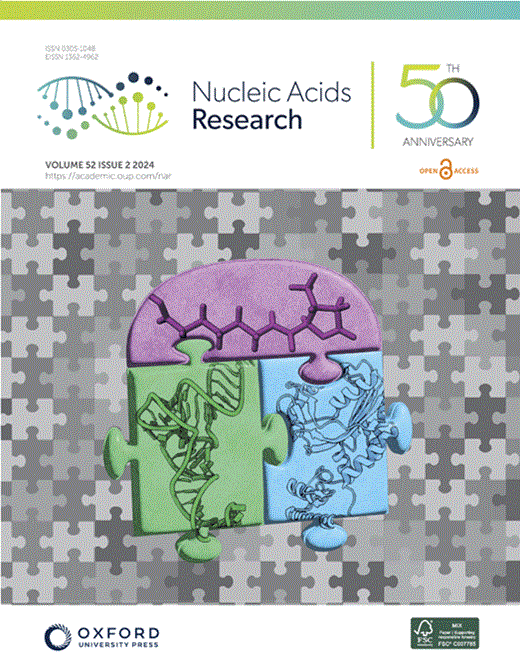AAV vector transduction restriction and attenuated toxicity in hESCs via a rationally designed inverted terminal repeat
IF 16.6
2区 生物学
Q1 BIOCHEMISTRY & MOLECULAR BIOLOGY
引用次数: 0
Abstract
Adeno-associated virus (AAV) inverted terminal repeats (ITRs) induce p53-dependent apoptosis in human embryonic stem cells (hESCs). To interrogate this phenomenon, a synthetic ITR (SynITR), harboring substitutions in putative p53 binding sites was generated and evaluated for vector production and gene delivery. Replication of SynITR flanked transgenic genome was similar compared to wild type (wt) ITR, with a modest increase in vector titers. Packaged in the AAV2 capsid, wtITR and SynITR vectors demonstrated similar transduction efficiencies of human cells without toxicity. Following AAV2-wtITR vector infection of hESCs, rapid apoptosis was observed as reported. In contrast, infection by AAV2 vectors packaged with SynITRs attenuated the wtITR-induced hESC toxicity. While hESC particle entry and the abundance of double stranded circular episomes was similar for the ITR contexts, reporter expression was inhibited from transduced SynITR genomes. Mechanistically, infection of hESCs induced γH2AX in an ITR-independent manner, however, canonical activation of p53α was uncoupled using AAV-SynITR. Further investigations in hESCs revealed additional novel findings: (i) p53β is uniquely and constitutively active and (ii) AAV vector infection, independent of the ITR sequence, induces activation of p53ψ. The data herein reveal an ITR-dependent AAV vector transduction restriction specific to hESCs and manipulation of the DNA damage response via ITR engineering.腺相关病毒(AAV)倒置末端重复序列(ITR)可诱导人类胚胎干细胞(hESC)中的 p53 依赖性凋亡。为了研究这一现象,我们生成了一种合成 ITR(SynITR),它在推定的 p53 结合位点上进行了置换,并对其载体生产和基因递送进行了评估。与野生型(wt)ITR相比,SynITR侧翼转基因基因组的复制相似,载体滴度略有增加。wtITR和SynITR载体包装在AAV2囊壳中,对人体细胞的转导效率相似,且无毒性。如报告所述,AAV2-wtITR 载体感染 hESCs 后,可观察到细胞迅速凋亡。与此相反,用包装有 SynITR 的 AAV2 载体感染则会减轻 wtITR 诱导的 hESC 毒性。虽然 ITR 上下文中 hESC 粒子的进入和双链环状外显子组的丰度相似,但转导的 SynITR 基因组抑制了报告基因的表达。从机理上讲,感染 hESCs 会以不依赖于 ITR 的方式诱导 γH2AX,然而,使用 AAV-SynITR 会解除 p53α 的典型激活。在 hESCs 中的进一步研究揭示了更多新发现:(i) p53β 具有独特的组成性活性;(ii) AAV 载体感染与 ITR 序列无关,可诱导 p53ψ 的活化。本文的数据揭示了依赖于ITR的AAV载体转导限制对hESC的特异性,以及通过ITR工程操纵DNA损伤反应。
本文章由计算机程序翻译,如有差异,请以英文原文为准。
求助全文
约1分钟内获得全文
求助全文
来源期刊

Nucleic Acids Research
生物-生化与分子生物学
CiteScore
27.10
自引率
4.70%
发文量
1057
审稿时长
2 months
期刊介绍:
Nucleic Acids Research (NAR) is a scientific journal that publishes research on various aspects of nucleic acids and proteins involved in nucleic acid metabolism and interactions. It covers areas such as chemistry and synthetic biology, computational biology, gene regulation, chromatin and epigenetics, genome integrity, repair and replication, genomics, molecular biology, nucleic acid enzymes, RNA, and structural biology. The journal also includes a Survey and Summary section for brief reviews. Additionally, each year, the first issue is dedicated to biological databases, and an issue in July focuses on web-based software resources for the biological community. Nucleic Acids Research is indexed by several services including Abstracts on Hygiene and Communicable Diseases, Animal Breeding Abstracts, Agricultural Engineering Abstracts, Agbiotech News and Information, BIOSIS Previews, CAB Abstracts, and EMBASE.
 求助内容:
求助内容: 应助结果提醒方式:
应助结果提醒方式:


